Pear variety Bere Bosk
Beurre Bosc is an old French-bred pear variety with the fruits of the autumn ripening period. Bred at the end of the 18th century near Apremont (France) through the sowing of seeds of unknown origin. The variety was named after the French pomologist Bosc. Its other names are Bere, Bere Apremon, Bere Alexander, Bottle. In many countries of the world, Bere Bosk is recognized as the leader in prevalence among the well-known autumn varieties of pears. Since 1947, he has been on the State test. Zoned in Russia (foothill and central zone of Stavropol Territory, foothill and Black Sea zone of Krasnodar Territory, Crimea, Transcaucasian republics: Adygea, Dagestan, Kabardino-Balkarian, North Ossetian, Ingush, Karachay-Cherkess and Chechen), Armenia, Georgia, Moldova, Ukraine (Carpathian region, Transnistria, the mountainous part of Transcarpathia) and the republics of Central Asia.
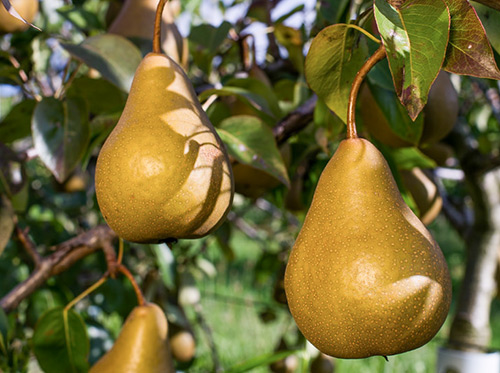
Trees are vigorous, with exuberant growth rates at a young age; under good growing conditions, they always reach very large sizes. The crown, formed by long geniculate branches, is formed of a rare, asymmetric, highly pyramidal shape; with age, it grows to an impressive size, taking on a slightly spreading wide pyramidal shape. The fruits are tied with ringlets and spears.
The shoots are thick, grayish brown. Lentils are small in size, often located. The kidneys are compressed. The leaves are large, ovoid, thick, with elongated tips and solid edges. Blade with a smooth surface, dark green color. Petioles are short (length - from 0.7 to 1.5 cm). The flowers are large, wide-open, with oblong-oval petals, cold-resistant; the edges of the petals are wavy, hollow; in inflorescences there are up to 10 - 20 flowers. Columns of pistils are shorter than stamens. Flowering takes place at a later date, which avoids spring frosts.
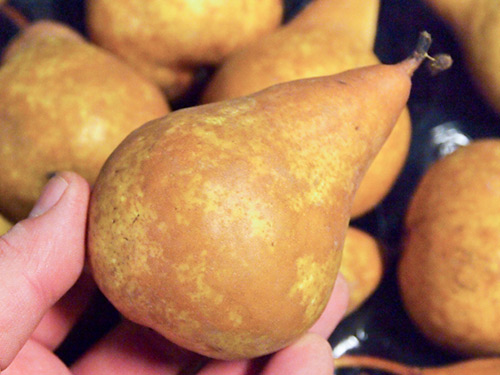
The fruits of the Bere Bosk pear are above average in size, large (the average weight is 180 g, but can vary from 150 to 250 g). Although the shape of the fruit often differs even within the same tree, bottle-shaped or elongated pear-shaped fruits are the most common. The skin is thin, slightly rough, yellowish-brown in color, completely covered with rusty spots; in the maturing period, the fruits acquire a golden-yellow (bronze) color characteristic of the variety. The peduncles are thick, long, curved in shape. The funnel is practically absent. The calyx is open, with a narrow, flat depression with slightly folded walls. The seed nest is upper, large, bulbous. Seeds are small in size, wide, pitcher-shaped, well executed, dark in color.
The pulp is snow-white or with a light creamy tinge, oily consistency, tender, melting, very juicy, excellent dessert sweet taste, with an almond flavor and spice. The tasting assessment of the taste of the variety on a 5-point scale is 4.4 - 4.8 points. By chemical composition, the fruits contain: dry soluble substances (14.7%), the amount of sugars (9.0%), titratable acids (0.2%), ascorbic acid (4.6 mg / 100 g), P-active catechins (42.3 mg / 100 g fr wt). The fruits of this variety are mainly consumed fresh, but in the case of long-term storage in the refrigerator, pears experience a deterioration in taste: the pulp loses its juiciness, becoming dryish, hard, crunchy.
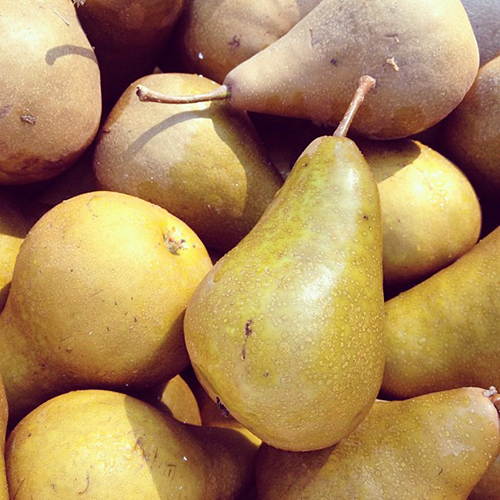
The period of removable fruit ripeness begins in the first half of September (usually from the 5th to the 15th day). Pears are tied in pairs or three, when ripe they are firmly held on the branches and do not crumble even under unfavorable conditions (for example, with strong gusts of wind). Non-simultaneous ripening of fruits is also often observed. The consumer period begins 15 to 20 days after the pickup. The transportability of the variety is good. The keeping quality of fruits is relatively low - about 1 month (25 - 30 days, up to a maximum of 40).
The early fertility of the Bere Bosk pear is low: the trees enter the fruiting season 6-7 years after planting in the garden. The yield is quite high: under the conditions of the central part of the Kuban, 16-19-year-old trees yield on average 80-100 c / ha, and under the conditions of the southeastern subzone of the foothill zone, 24-29-year-old trees yield up to 160-180 c / ha.
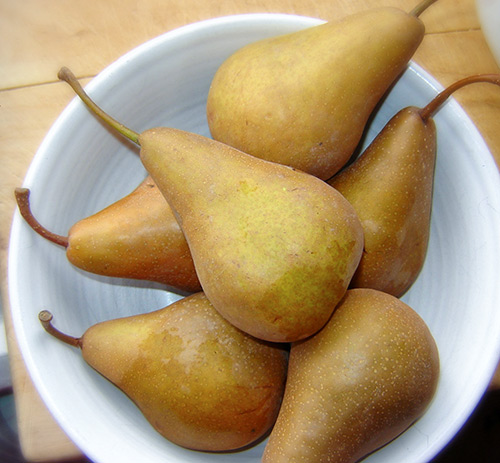
The winter hardiness of the variety is generally assessed as rather low. The level of winter hardiness is insufficient even for the Krasnodar Territory, with the exception of the Black Sea coast and the foothill zone. According to L.P. Simirenko, it is extremely low in the conditions of the Crimea: in severe winters, trees freeze out here to the very roots (especially young ones) or receive severe damage (by 3-4 points). This was the case in the winter of 1985 - 1986, when the air temperature dropped to minus 28 - 30 ° C. Also, according to the results of many years of observations by K.K. Dushutina admitted that in the conditions of Moldova, the Bere Bosk variety can be safely attributed to the group of the most non-resistant. Drought resistance is also low. Resistance to diseases and pests (including scab) is good.
In general, this pear is undemanding to growing conditions. Light, loose, moderately moist soils are well suited for her. The variety is propagated on seed stocks of forest pears or senets of cultivated varieties. When grafted onto quince, an intermediate insert is used.
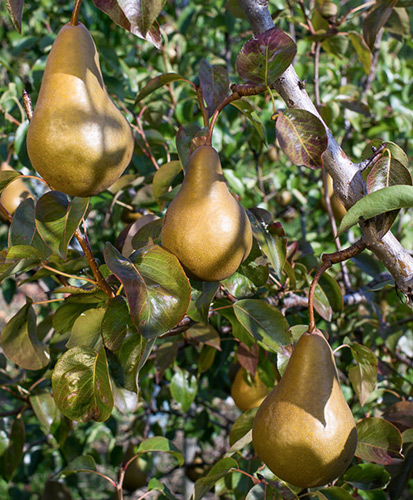
The obvious advantages of the variety are: attractive fruits above average size with a delicate dessert taste; good indicators of productivity, transportability, non-shedding; relative resistance to scab.
Among the disadvantages: tall trees with a powerful crown, insufficiently high early maturity, low winter hardiness and drought resistance.
The Bere Bosk variety was widely used in breeding work. With his participation, about 20 new varieties have been created (of which 7 have been zoned). Among them:
- varieties of selection of the All-Russian Research Institute of Floriculture and Subtropical Crops: Verbena, Black Sea Amber (both obtained through free pollination of Bere Bosk), Rassvet (Bere Bosk x Memory of the Congress);
- variety of the Dagestan selection experimental station of fruit crops: Bergamot of Dagestan (Bere Bosk x Williams);
- selection variety of the Research Institute of Horticulture of Siberia: Svarog (Bere Bosk x Ussuriyskaya);
- variety of the Sverdlovsk Experimental Gardening Station: Tikhonovka (Bere Bosk x Ussuriiskaya).
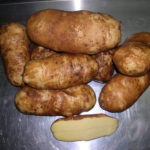
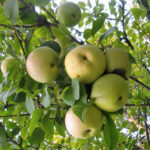

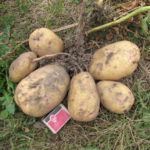
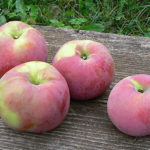




Pear Bere Bosc has been growing in our garden for many years. She began to calculate how old she was and did not believe herself. She was planted by her grandfather back in 1948. And it continues to bear fruit to this day.
The fruits are of high taste. At first they are hard, and later they become soft, very juicy. You can pick them not fully mature, they normally "reach" outside the tree. But all the same, it is impossible to keep them for a long time. At one point, they all ripen at the same time. Despite the delicate and sweet taste, a light bitterness gives this variety a special piquancy, which does not spoil the impression at all, but, on the contrary, makes it unique. And also, a special color of the pulp is the light color of baked milk. The skin is not very attractive, brownish-rusty, rough. And for eating fresh pears, and for cooking jam or jam, we peel it. But the shape of the fruit is beautiful.
The disadvantages include the fragility of the branches. Care must be taken when harvesting. In especially fruitful years, branches can break off under the weight of the fruit.
I always froze the fruits of this variety for the winter.And once I conducted an experiment: in a paper box, pears (stored in the refrigerator, laid out in one row) survived until the New Year without losing their taste.
I really like the taste of Bere Bosk: the pulp, like butter, juicy, moderately sweet. Our half-century tree always yields a lot of fruits, and quite often they come in bizarre shapes: now long, elongated, like bottles, now embossed, with a "waist" ...
In recent years, it has been subject to decay, although this is quite simple to explain - in summer, the heat is replaced by almost tropical downpours.
Our pear Bere Bosk is about ten years old. The tree is mature, rather tall, but the crown is compact, not spreading. Bears fruit for five years. There is no tree without fruit for a single year, but, as a rule, the intensity of fruiting is different. One year will pamper a dozen or so pears, and the next there are so many fruits that are enough for all relatives and friends.
The fruits are different in size, they are very large, but equally juicy, tender, sweet. By the way, they ripen unevenly. We begin to remove the fruits at the end of September, the last ones are removed in the middle of October, some are still hard, but ripen well.
Pears do not last long. Even if stored in the refrigerator, after a month they become not so juicy and begin to deteriorate. But, fortunately, our fruits are not stagnant.